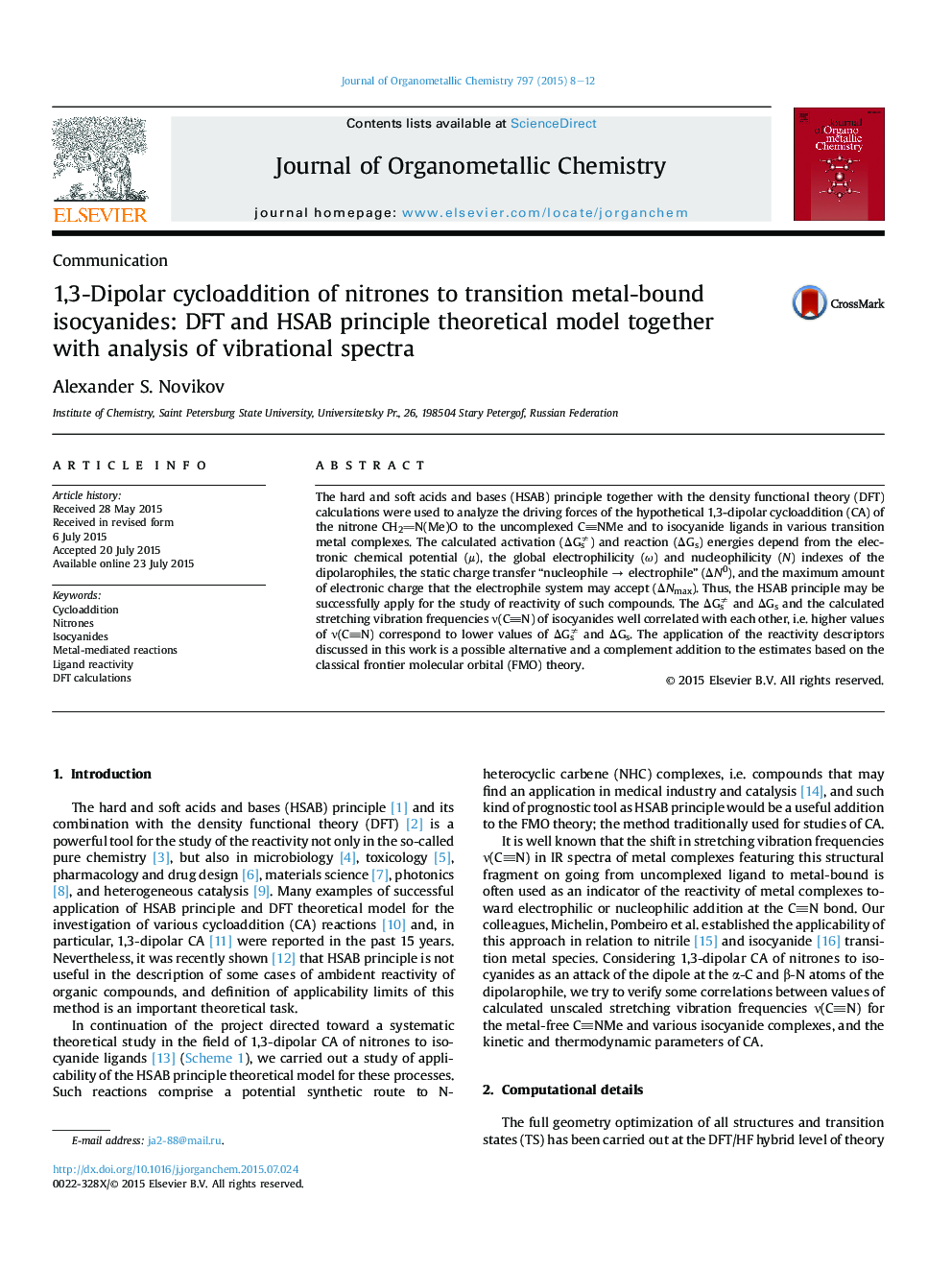| Article ID | Journal | Published Year | Pages | File Type |
|---|---|---|---|---|
| 1321906 | Journal of Organometallic Chemistry | 2015 | 5 Pages |
•CNMe and 19 isocyanide complexes were classified as nucleophiles and electrophiles.•HSAB principle theoretical model was applied for analysis of these species.•ν(CN) correlate with kinetic and thermodynamic parameters of cycloaddition.
The hard and soft acids and bases (HSAB) principle together with the density functional theory (DFT) calculations were used to analyze the driving forces of the hypothetical 1,3-dipolar cycloaddition (CA) of the nitrone CH2N(Me)O to the uncomplexed CNMe and to isocyanide ligands in various transition metal complexes. The calculated activation (ΔGs≠) and reaction (ΔGs) energies depend from the electronic chemical potential (μ), the global electrophilicity (ω) and nucleophilicity (N) indexes of the dipolarophiles, the static charge transfer “nucleophile → electrophile” (ΔN0), and the maximum amount of electronic charge that the electrophile system may accept (ΔNmax). Thus, the HSAB principle may be successfully apply for the study of reactivity of such compounds. The ΔGs≠ and ΔGs and the calculated stretching vibration frequencies ν(CN) of isocyanides well correlated with each other, i.e. higher values of ν(CN) correspond to lower values of ΔGs≠ and ΔGs. The application of the reactivity descriptors discussed in this work is a possible alternative and a complement addition to the estimates based on the classical frontier molecular orbital (FMO) theory.
Graphical abstractFigure optionsDownload full-size imageDownload as PowerPoint slide
